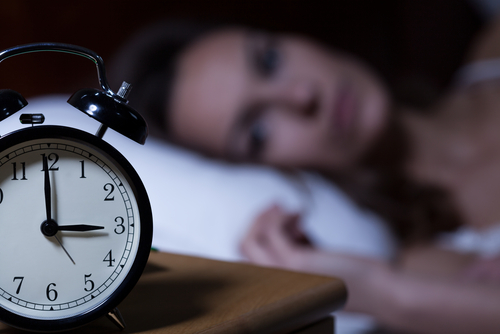Which Sleep Position is Best?
Most likely you have a favorite sleep position. For most of us, this is the first position in which we lay after getting into bed. It’s usually our most comfortable position, and most likely the position you’ve been sleeping in for years.
Have you ever thought that your favorite sleeping position may be affecting your sleep? And if so, are there better positions to enhance your sleep?
Recent research suggests that different sleep positions not only impact our quality of sleep, but are also linked to our personalities. Chris Idzikowski, PhD, a director of the Sleep Assessment and Advisory Service in London, and author of several books on sleep, including Learn to Sleep Well, states that there is a connection between our sleep and personalities on a very basic level.
“If you sleep in a bad position, you’re more likely to be grumpy the next day,” says Idzikowski as reported by WebMD.
The same is true for those that simply do not get enough sleep. Ana Krieger, MD, director of the New York University Sleep Disorders Center in New York City, iterates this point.
“Everyone has an individual need to sleep and if you are not able to meet your needs, you are not going to behave. Your normal way to compensate for the loss of sleep is by overworking, being rude or hyperactive, being more depressed and less social.”
The overall consensus from sleep experts is that our sleep quality is based on the amount of sleep we get, and in which position we sleep. In order to see which position is best, Idzikowski conducted a study on 1,000 people to examine how their sleep positions affect their quality of sleep.
During Idzikowski’s research, he identified that the six common most common sleeping positions not only have certain health benefits and / or risks associated, but can also reveal personality traits.
The Fetus
The Fetus or fetal position is the most common sleeping position. In Idzikowski’s study, 41% of participants slept on their side with their knees curled toward their body.
Personality
People who sleep in the fetus position are described as tough on the outside but sensitive at heart. More than twice as many women slept in this position versus men.
Health
This position is great for pregnant women or people who struggle with snoring, but not ideal for preventing neck and back pain.
The Log
The Log position is the second most common position (15%), and describes sleepers that lye on their side with both arms down.

Personality
Log sleepers are generally easy going and social. They tend to trust strangers and may even be a bit gullible.
Health
This position will keep your spine straight and is extremely helpful to those suffering from back pain. Research also shows that sleeping on your left side helps promote digestion. However, sleeping on your side can also cause nerve compression in your arms and legs, and sleeping on your right side can also promote acid reflux.
According to Rachel Salas, MD, assistant medical director for the Johns Hopkins Center for Sleep, people that sleep on their side can help relieve some issues by sleeping with a pillow at their side.
“Sleep next to a body pillow to help support your back and neck. You might also try sleeping with a thin pillow between your knees to give your back extra support.”
The Yearner
The Yearner position describes those that sleep on their side with both arms out in front. About 13% sleep in this position.

Personality
Yearners tend to be open, yet cynical and suspicious. They are also generally indecisive, but stick to their guns once they make up their minds.
Health
Similar to the fetus and log positions, sleeping on your side can have negative health impacts. Try sleeping on your left side with a pillow for support.
The Soldier
The Soldier position makes up 8% of participants from Idzikowski’s study and describes those that sleep on their back with their arms to their side.
Personality
Soldier sleepers tend to be reserved and quiet. They also have high standards for themselves and others.
Health
Sleeping on your back is great for those struggling with neck and back pain. It has been shown to reduce acid reflux and even helps with minimizing wrinkles. However, sleeping on your back may lead to snoring, difficultly sleeping, and an overall bad sleeping experience.
The Freefall
The Freefall position describes a small amount of participants (7%) that lay on their stomachs with their arms wrapped around the pillow.

Personality
Freefall sleepers can be brash and gregarious, thin-skinned and sensitive of criticism.
Health
Sleeping on your stomach has been proven to be beneficial for those that snore. It also promotes good digestion. However, sleeping on your stomach makes it difficult to maintain a neutral spine position, puts pressure on your joints and muscles, and can lead to pain, numbness, and tingling.
The Starfish
The Starfish position is the least popular position (5%) and describes those that sleep on their back with both arms pointed upwards.

Personality
Starfish sleepers are described as good friends and great listeners. They love to help and generally do not like attention.
Health
Like the soldier, sleeping on your back has its pros and cons.
Which Position Is Best?
While we would love to tell you what the best sleep position is, the truth is that there really isn’t a “best position.” Each person will have their own sleep position that works best for them. Are you a combination of a few of these? Have a look at this guide to find out which pillow could be best for you.
In order to maximize your sleep, visit your local sleep clinic. If you live in Alaska, click on the link below to connect with a professional sleep specialist.




